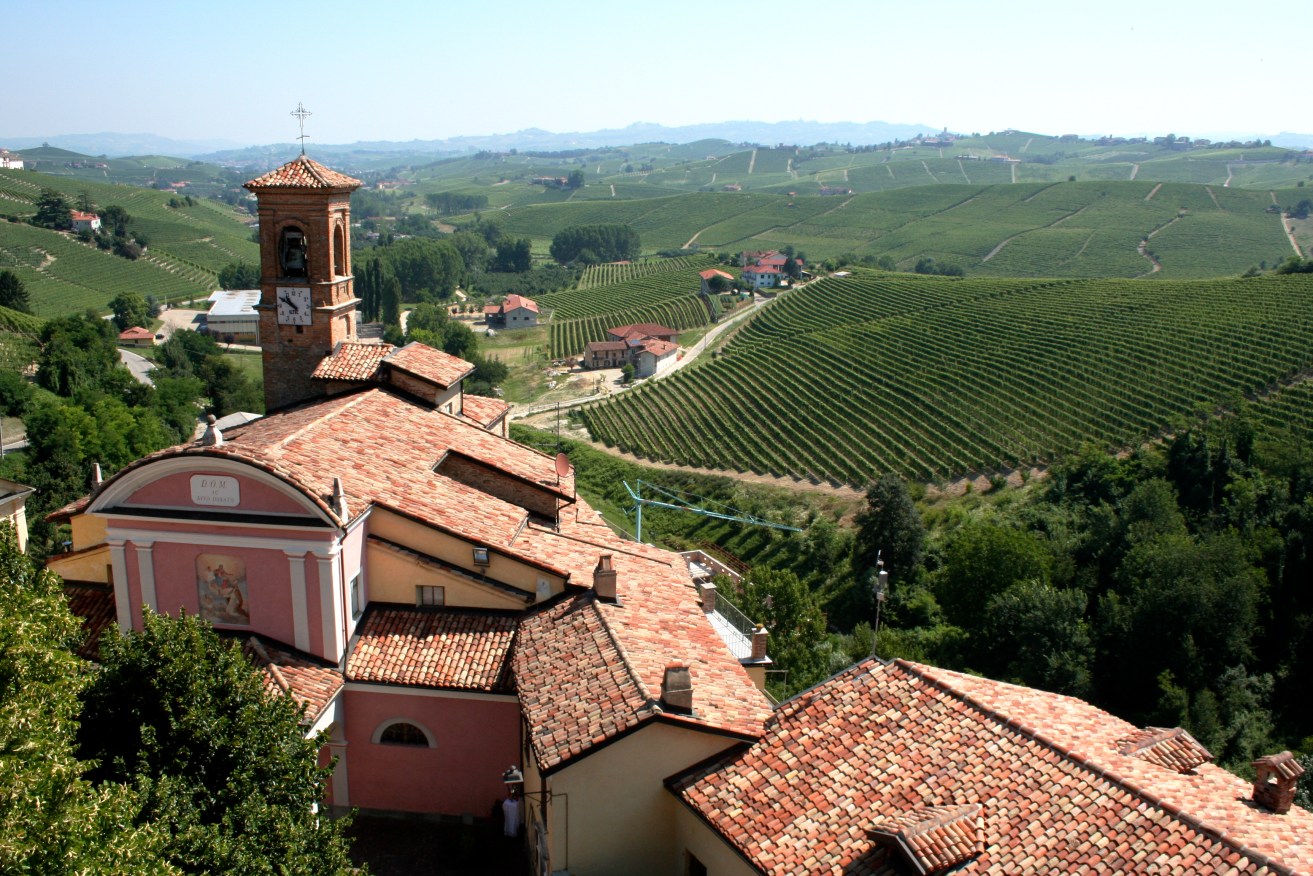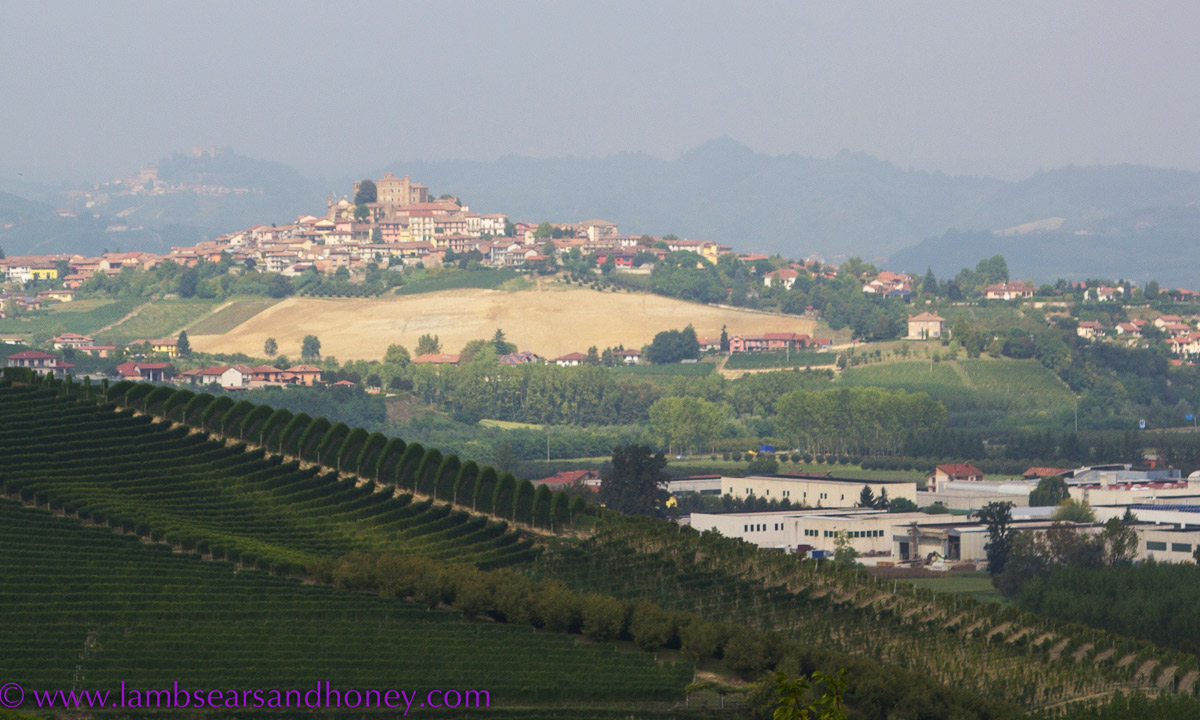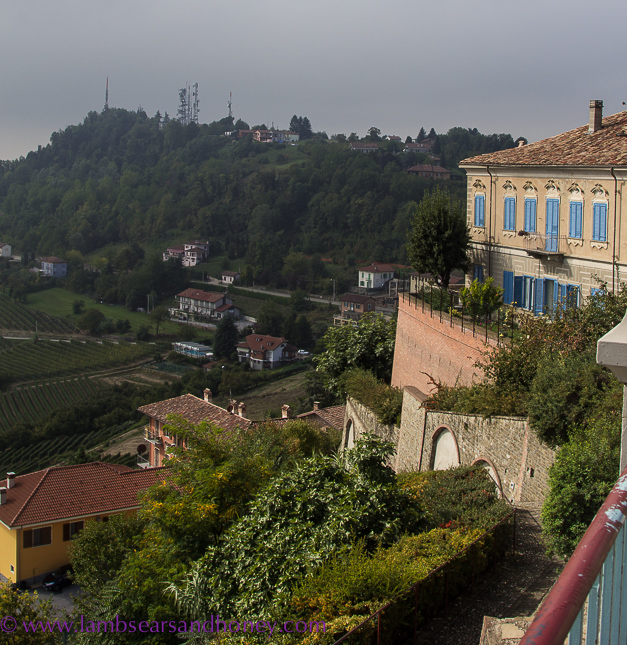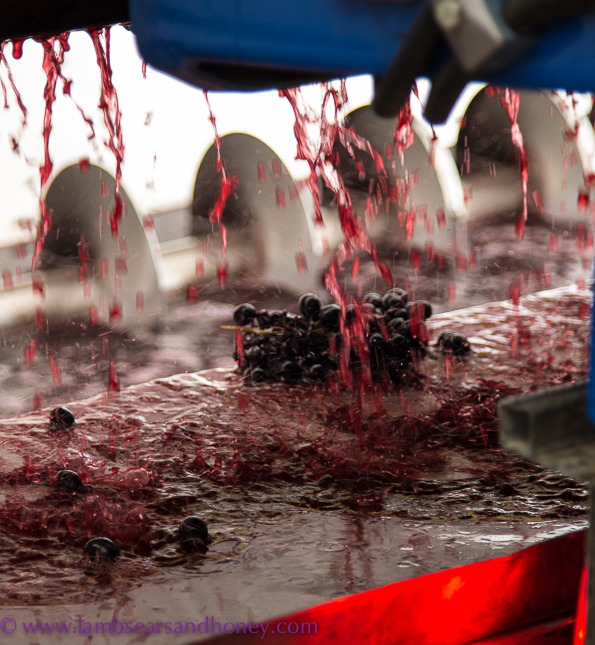Barolo: home of Italy’s king of wines
A visit to the beautiful Italian region that gave the world the noble Barolo wine is a treat for lovers of fine wine.

View from the Barolo wine museum. Photo: Megan Mallen / Wikimedia Commons
Despite the fact that The Bloke and I have always been keen to show our support for the Australian wine industry by consuming as much of it as possible, during a trip to Italy a few years ago our heads were turned just a little.
It was on this trip that we discovered Barolo, often referred to as “the king of wines”.
This refined and elegant wine is known for its aromas of tar and roses, its ruby red colour which ages to a darker rusty red, and its capacity to age and improve over years.
Barolo, and the equally distinguished Barbaresco, are grown in Piedmont. Situated in the north-west of the country, this is one of Italy’s most prestigious wine regions, with more than 47,000 hectares under vines. It produces 250 million litres of wine annually.
Seduced by the complex sophistication of this noble wine, my husband vowed to visit the region and learn about it from the ground up.
Piedmont’s position at the foot of the Alps grants it the benefit of cool breezes to regulate the hot summer days, while at the same time protecting it from the worst of the winter winds from the north. Because of this location, the region is often foggy, which is where Nebbiolo, the grape which these wine giants are made from, gets its name – “nebbie” means “fog”.
Barolo wine is produced in the hillside village which gives the wine its name.
The designated production zone for the wine is small – only 8km wide at its widest point. The zone also includes La Morra, Castiglione Falletto, Serralunga d’Alba and the northern half of Monforte d’Alba. While several other districts have been added to it in the last century, more than 85 per cent of Barolo is still produced in the original five communes.
Our first stop was the tiny commune of La Morra, a major winegrowing district which borders the Barolo municipality and where for some time it was actually illegal to cut down a Nebbiolo vine. The village is perched high on a hill with magnificent views of the surrounding regions.
There are countless small wine producers all over the region, many of which are represented in the Cantina Comunale di La Morra. The staff are friendly and knowledgeable, and this is the perfect spot to try various Barolo labels if you don’t have the time or means to get to the producers’ domains.
From there we drove to the commune of Grinzane Cavour and visited its castle for a spectacular lunch, before heading to Barolo and the historical cellars of Marchesi di Barolo.
The vineyards here were established more than 200 years ago by the Marchese Carlo Tancredi Falletti di Barolo and his wife, Giulia. Their wine was regularly served at important diplomatic and royal events, developing a reputation for its excellence.
The Marchese and his wife had no children, and in 1929 local winemaker Emilio Pietro Abbona acquired the cellars and gradually purchased the estate, piece by piece. The Abbona family still runs the estate and it is today presided over by fifth-generation winemaker Ernesto Abbona.
The Marchesi di Barolo’s cellar holds a cache of more than 40,000 bottles of Barolo, with vintages dating back to 1859.
We were able to take a private tour through the winery, including a glimpse in the Abbona family’s private cellar, where some of the world’s most priceless wine is held. Following that we were walked through a tasting of the king of wines – an experience we enjoyed immensely given a fuller knowledge of this exceptional wine.
We were there in late September, vintage time, and just as we were about to leave we were thrilled to find a truck delivering the famed Nebbiolo grapes to the winery. So The Bloke’s wish had been granted – we were able to get very up close and personal with Barolo wine.
Getting around
Many wine lovers head to Barolo and stay in the region for a few days, driving themselves around and sampling the wonderful wine and food available. If you find the thought of driving in rural Italy a little unnerving, a day trip is the answer for you.
There are plenty of tour companies that offer group or private tours from either Turin or Asti. You can also hire a driver in Turin to take you to Barolo or catch a train from Turin to Asti in under half an hour to meet up with a tour.
The region
Piedmont borders Switzerland and France in the north-east of Italy. It is surrounded on three sides by the alps, and is home to the Italian car manufacturing capital of Turin. As well as the wine, other attractions include Medieval castles and spa resorts. You’ll find more information about the region here.
South Australian writer Amanda McInerney writes about travel and food on her Lambs’ Ears & Honey blog. She was a guest of Eating Europe for her Eating Amsterdam tour.







